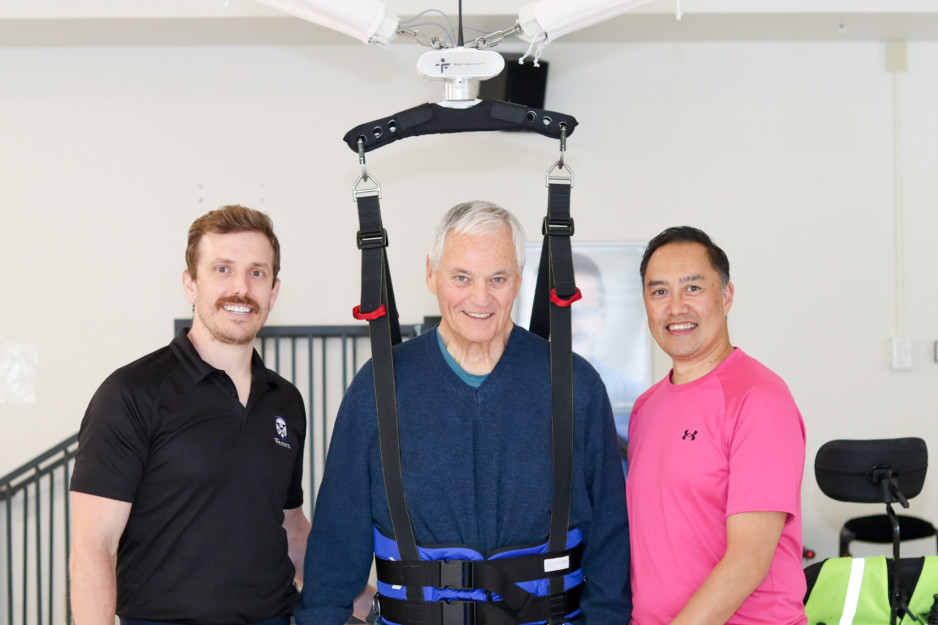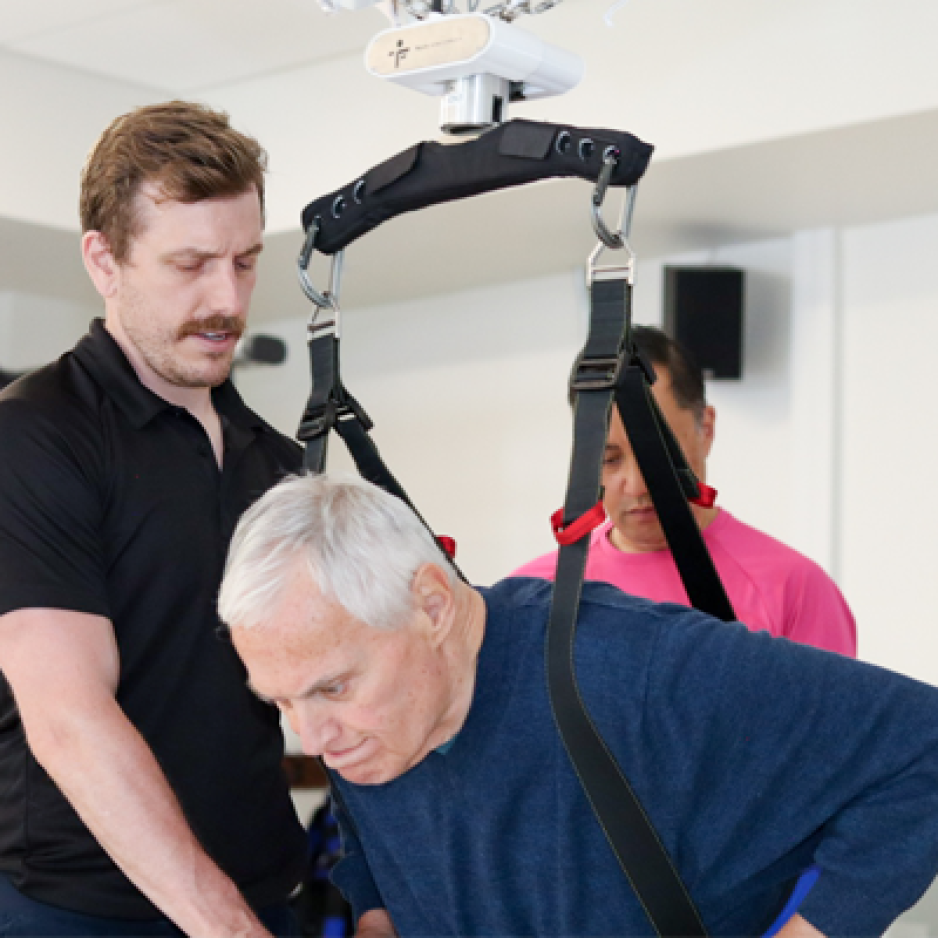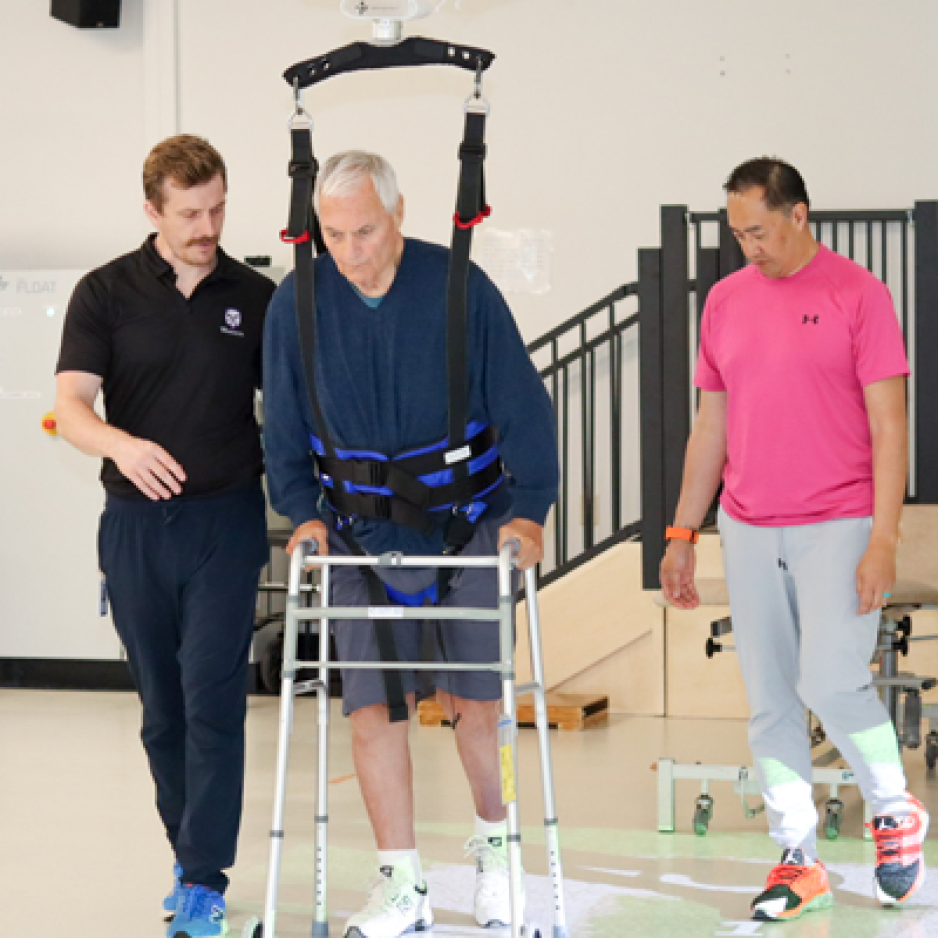FLOATing on air
As an Occupational and Physiotherapy Assistant at St. Joseph’s Parkwood Institute for 25 years, Dennis Argoso has seen countless patients with spinal cord injuries make incredible strides in their recovery.
Today, patients aren’t just making strides – they’re floating forward.
Thanks to generous donor support, Parkwood is now home to a unique body weight support system known as the FLOAT that’s one of just two in Canada and boasts the largest footprint.
“This is an absolute gamechanger for our patients,” says Argoso.
Following several months of renovations in Parkwood’s Rehabilitation Gym, the FLOAT is finally installed and already transforming care. The unrestrictive, multidirectional system provides safe rehabilitative training for patients, allowing them to be supported and if needed have their weight offloaded while wearing a harness attached to four cables and a patient bar that senses movement. It improves their balance, mobility and function, and – most importantly – boosts their confidence in their own abilities.
“It gives them the opportunity to challenge themselves in a controlled environment,” says Argoso, about what makes this system so unique to the people he works with. “They can push the boundaries a little bit and try more difficult things. If they lose their balance, the FLOAT will catch them.”
The next step in rehabilitation
Many people experience an intense fear of falling after an illness or injury, and it can pose a huge barrier that keeps them from reaching their recovery goals. But the freedom offered by the FLOAT means they can safely practice different kinds of movements and activities they used to enjoy, from walking and running to playing pickleball and line dancing.
Argoso recalls working with one patient who loved to line dance but struggled to after having a stroke. Using the FLOAT, they were able to practice their moves again – with country music booming through the speakers – and gain confidence before returning to the dance floor.
With proceeds raised through the 2024 Brain It On! Cognitive Corporate Challenge event, St. Joseph’s was also able to invest in a new virtual reality module for the system.
The VR component projects simulations onto the floor beneath the patient so they can perform different exercises, obstacle courses and difficulty levels. Trying activities like preventing a moving soccer ball from scoring a goal, navigating a twisted path or stepping across river rocks makes training feel more exciting and keeps patients motivated.
“It’s so different,” says Argoso. “A lot of people see the equipment and say, ‘This is really cool, I really want to do this’. Once they feel comfortable in it, they love challenging themselves.”
Fueling the future of care and research
The FLOAT is one of the centrepieces of The Gray Centre for Mobility and Activity at Parkwood. Established in 2020, The Gray Centre is a research hub exploring treatments and interventions to help people maintain mobility throughout their life.
The Gray Centre fuels many of the rehabilitation research projects happening at Parkwood today. Having access to leading-edge technology like the FLOAT allows research teams to push the boundaries of what’s possible – just like the patients using the system each day, working to reach their goals.
Argoso is hopeful that even more care areas across Parkwood will try out the FLOAT in the future. It can benefit many different patient populations, from people adjusting to life after an amputation to those with traumatic brain injuries. Through donor support, patients now have a new tool to help them get back to the things they love.
“I want to thank the donors for what they have done for people’s lives,” Argoso says. “We have a lot of high-tech equipment here at Parkwood, and donors have a big part in that. It makes this an amazing place for therapy.”


